Video lecture for this page
This material (including images) is copyrighted!.
See my copyright notice for fair use practices.
Select the photographs to display the original source in
another window. Most of the ground-based telescope pictures here are from the
Anglo-Australian Observatory
(AAO---used by permission). Links to external sites will be displayed in another window.
Spiral galaxies have flattened disks with a spiral pattern in the disk.
The spiral arms can go all of the way into the bulge or be attached to the
ends of a long bar of gas and dust that bisects the bulge.
The four distinguishing characteristics of the spirals are:
(a) they have more orderly, rotational motion than random motion (the rotation
refers to the disk as a whole and means that the star orbits are closely confined
to a narrow range of angles and are fairly circular); (b) they have some or a lot
of gas and dust between the stars; (c) this means they can have new star formation
occurring in the disk, particularly in the spiral arms; and (d) they have a spiral
structure.
Spiral galaxies are sub-classified into ``a'', ``b'', ``c'', and
``d'' groups according to how loose their spiral arms
are and how big the nucleus is. The ``a'' group spirals have large bulges and
very tightly wound spiral arms and the ``d'' group spirals have almost no bulge
and very loose arms. The Milky Way is between the ``b'' and ``c'' groups with
a bar, so it is an SBbc-type spiral galaxy. Most spirals are
luminous. Some other examples of spiral galaxies are M31 (the Andromeda
Galaxy) and M33 (a small spiral in the Local Group).
Some disk galaxies have no
spiral arms and are called ``S0'' (``SB0'' if there is a bar) or lenticular
galaxies. They are placed at
the point in the tuning fork diagram where it branches off to the regular
spiral or barred spiral pattern prong. Their gas and dust may been blown away
by the galaxy moving quickly through the low-density intergalactic medium
(hot, very thin gas between the galaxies) or used up in a rapid burst of
star formation.
The sequence of images below starting from top left and moving clockwise:
the Andromeda Galaxy (=Messier 31, note M32 above it and M110 below it),
Triangulum Galaxy (=Messier 33, small spiral in the Local Group),
NGC 2997 (Sc grand-design spiral, may be barred), NGC 3351 (=Messier 95,
SBb type), NGC 1365 (SBbc type, note looser arms), NGC 3031 (=Messier 81, Sb type, note
it has a larger nucleus than NGC 2997 and tighter arms)
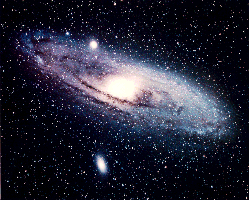
The Andromeda Galaxy (=M 31): a
large spiral galaxy (Sb) near the Milky Way. Note M 32 just above it and M
110 below it.
Courtesy of Jason Ware |
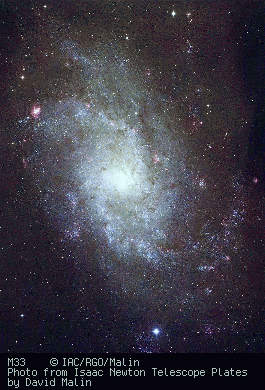
The Triangulum Galaxy (=M 33): a small spiral galaxy
(Scd) in the Local Group. |
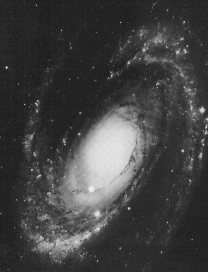
Messier 81: a large spiral
galaxy (Sb).
Courtesy of NOAO/AURA/NSF) |
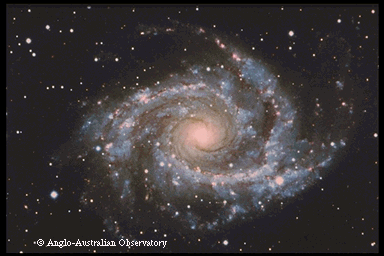
NGC 2997: a large face-on spiral galaxy (Sc). |
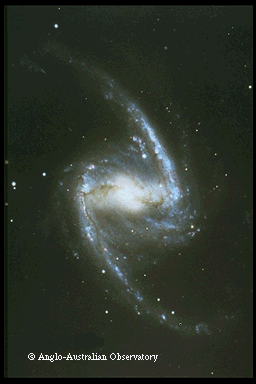
NGC 1365: a barred spiral
galaxy (SBbc). |
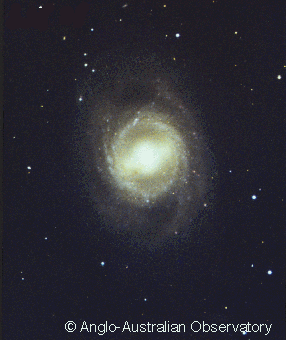
NGC 3351 (=M 95): a barred
spiral galaxy (SBb). |
 Go back to previous section --
Go back to previous section --
 Go to next section
Go to next section
last updated:
April 12, 2023
Is this page a copy of Strobel's
Astronomy Notes?
Author of original content:
Nick Strobel





